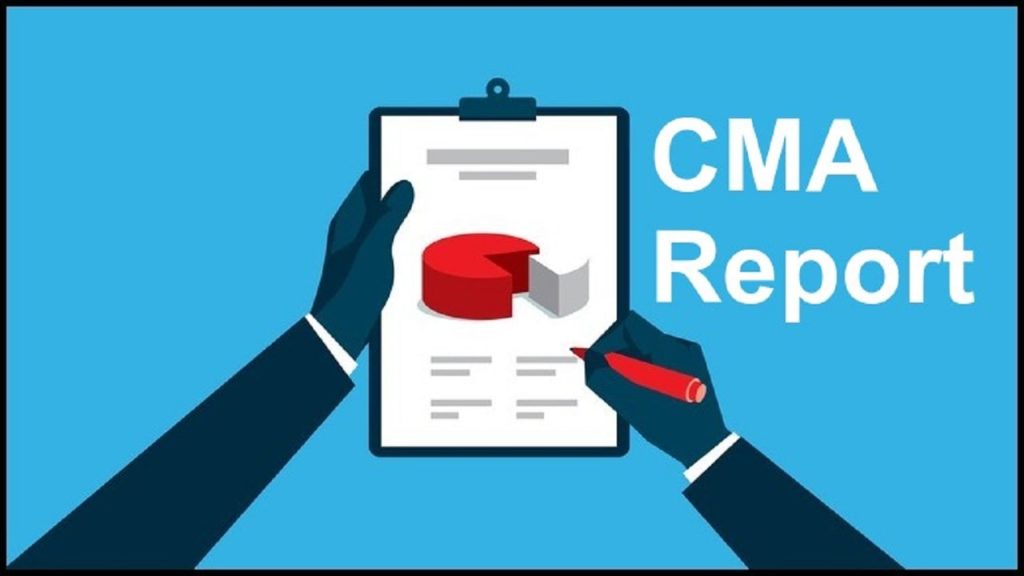CMA Report – Underneath the Credit Authorization Scheme (CAS), proper permission of the RBI for credit beyond the defined caps is necessary. These requirements and the credit restrictions have been modified from time to time. Originally, the Credit Authorization Scheme (CAS) will be seen as a mechanism to discourage any massive borrowers from exploiting limited credit capital.
Subsequently, the suggestions of the Chore Committee and the Tandon Group were integrated into the CAS study of bank credit proposals. Usually, the approval of the RBI caused unnecessary delays, which the banks and their clients did not like. Their method of controlling the repayment of bank credit was also a problem.
Get CMA Data/Report for Bank Loan

So, What is a CMA report?
The CMA report is a report showing the anticipated results and previous financial results of a company. It is summarized with all of the other necessary financial ratios and indicators to enable Financial Analysts and Bankers to assess the financial strength of a company. Many of the financial sector demand the borrower (Business Loan Applicant) to submit a report on the Credit Monitoring Arrangement (CMA Report) with a view to understanding the flow and usage of funds in a company. A professionally written CMA report will improve the likelihood of securing a bank loan.
Because of CMA banks were able to approve credit proposals (of large borrowers) after a thorough review of past results. There is a further provision for the banks. They have to send big credit applications to the Reserve Bank of India for post-sanction inspection.
What will you find in CMA report?
CMA covers following:
Particulars of current & proposed limits
This statement in the report on the Credit Management Arrangement (CMA) explains the current credit limits based on funds & non-funds, their utilisation limits and history. In fact, the statement also contains the planned or implemented cap of the borrower. This report is a simple document to be given to the financier by the lender.
Operating statement
This statement shows the business strategy of the creditor for 3 to 5 years the current revenue, earnings before & after tax, sales estimates, direct & indirect expenditures, and profit position. Mostly on grounds of the borrowers’ working capital demand, these conditions are case-by-case unique. This is a research study of the lender ‘s current & anticipated profit-generating ability.
Balance sheet
This statement gives an insight of the actual and expected of current and forecasted financial years. This helps to provide a detailed overview of the borrower ‘s current & non-current assets, current & non-current liabilities, and cash & bank status. This assumption also describes the status of the lender’s total wealth for the years expected in the long term. It is the study of the balance sheet, as the name suggests, which offers a full image of the lender’s financial situation.
Comparative statement of Current Asset & Current liabilities
This statement gives a comparative study of the new asset & liability movement. This evaluation essentially helps to determine the borrower’s ability to fulfil the criteria for working capital as well as the real cycle of working capital for the expected duration.
Maximum Permissible Bank Finance (MPBF)
It is a quite critical statement. This requires an estimate that shows the overall permitted finance of the bank. It demonstrates the borrower’s ability to borrow money.
Fund flow statement
This statement is the review of the Fund’s flow for the current and expected time. In this report, the status of the borrower with regard to the expected balance sheets and the estimates of the MPBF is indicated. The primary goal of this statement is to identify the progress of the Fund over a specified time-frame.
Ratio analysis
This statement sets out key financial ratios for financial experts and bankers. Basic main ratios are GP (Gross profit) ratio, Net profit ratio , Current ratio, Fast turnover ratio, Net value ratio, Net value to liabilities ratio, DP maximum, MPBF, Asset turnover, Current asset turnover, Working capital turnover, Fixed asset turnover, Debt-Equity ratio, etc.




